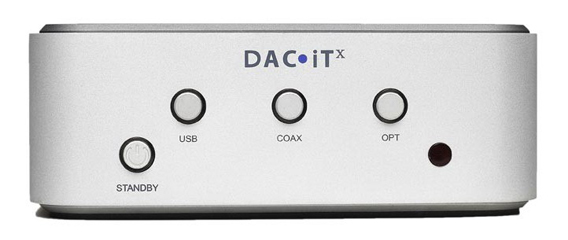Listen to Fleetwood Mac’s self-titled record on a turntable through some audiophile-grade speakers, and your experience will be vastly different than listening to the same album on your laptop. In the latter case, you may indeed tap your toes a little to “Monday Morning,” but you won’t get the soul-shaking experience the band intended you to have, and you may even be missing a lot of the detail from the original recording. In short, your music will sound far less magical than it has the potential to be.
Nearly all the tunes we listen to nowadays come to us digitally, whether it’s from an Android, laptop, iPad, Pandora®, Rhapsody® or elsewhere in the Cloud. And while we are certainly not proposing that you trash your iTunes library in favor of that box of phonograph records in the attic, you can reinvigorate your digital music with a little help from a digital-to-analog converter (DAC).
Decoding a digital audio file
The fact of the matter is we simply can’t hear the 1s and 0s that make up a digital audio file. This means that we actually require DACs to convert those digital bits to an audible analog signal. Thusly, all audio sources are designed with a DAC in some form or another. However, not all DACs are created equal. For example, DACs in your computer are notoriously weak and can make your music sound anemic, muddy and flat. Why do that to yourself, when you spent so much time handpicking music and so much money amassing your collection?
An add-on that’s music to your ears
Enter the external DAC to save the day. An external DAC will give your digital music the shot in the arm that it needs. These miraculous devices come in many shapes and sizes, but they all do one thing: make your music sound closer to the way it originally sounded in the studio where it was recorded. An external DAC will sound better than the one found in your computer or other audio source because it doesn’t fall prey to outside influences, such as interference from other electronics inside the source. An external DAC also devotes the proper space needed to do the conversion properly, as opposed to say, squeezing the DAC onto the motherboard of a computer or relegating it to the outskirts of a CD player’s insides.

